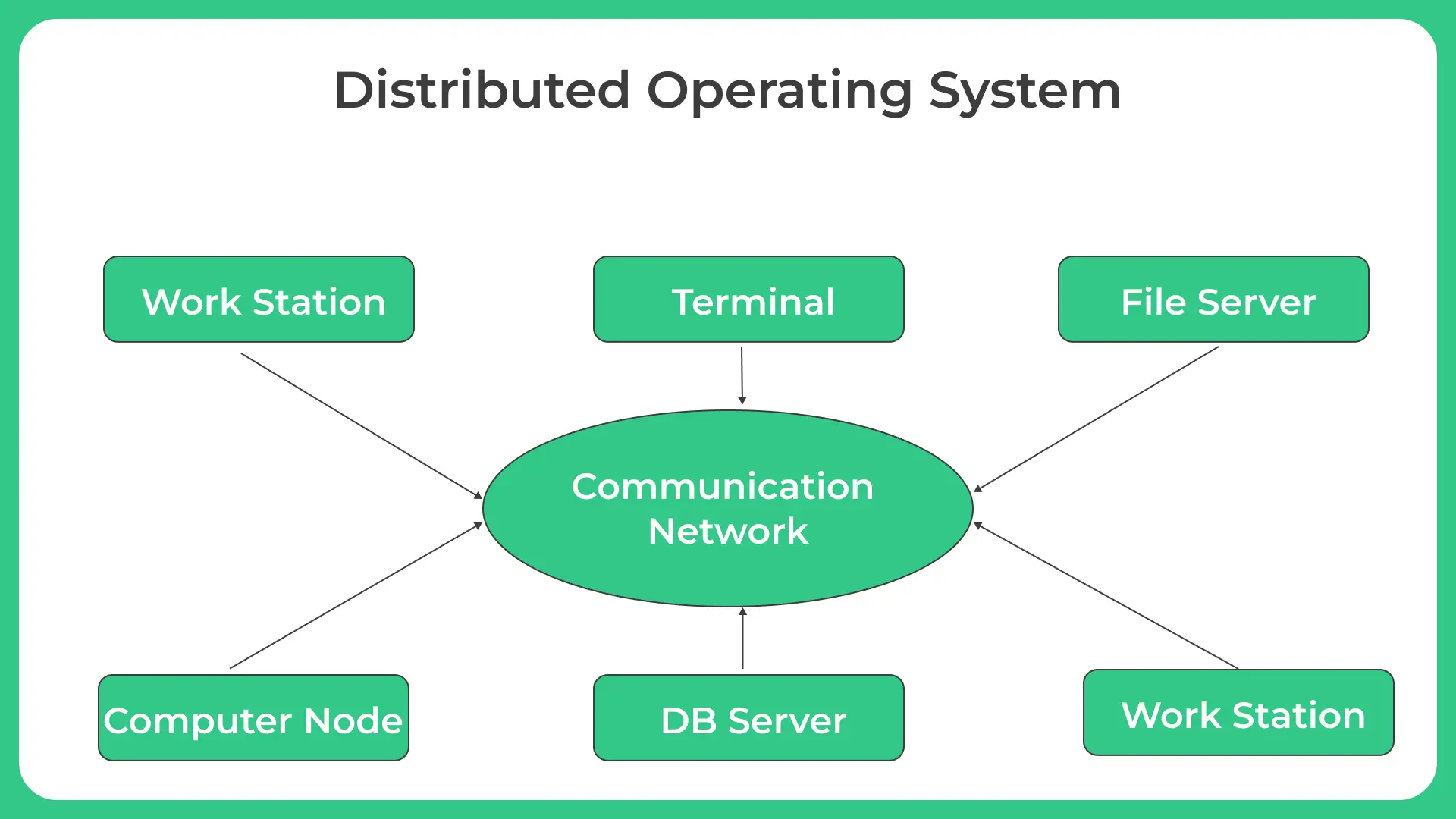0
Notifications Mark All Read
- Login
- Get Prime
Distributed Operating System in OS
Distributed Operating System
Operating systems play a vital role in managing computer hardware and software resources. They provide a foundation for executing programs, coordinating processes, and handling various input and output operations.
While traditional operating systems are designed to run on a single machine, the advent of distributed operating systems (DOS) has introduced new possibilities for scalability and resource utilization across multiple interconnected systems.

Overview of a Distributed Operating System
A distributed operating system refers to an operating system that runs on a network of computers and enables them to work together as a single entity. The primary purpose of a distributed operating system is to achieve efficient resource sharing, fault tolerance, and scalability.
Distributed operating systems are specifically designed to distribute computing tasks across multiple interconnected systems, providing several advantages over traditional operating systems.
Batch Processing in Modern Computing
While interactive and time-sharing systems dominate the modern computing landscape, batch processing remains relevant in various scenarios. In data-intensive environments, such as financial institutions and scientific research centers, batch processing is utilized for large-scale data analysis, report generation, and bulk data processing tasks. Batch systems continue to provide efficient and reliable processing capabilities for such workloads.

- Network communication protocols: Effective communication between nodes is crucial in distributed operating systems. Various network communication protocols, such as TCP/IP, UDP, and RPC, enable seamless interaction and data transfer between different machines.
- Resource management and synchronization: In distributed environments, managing and synchronizing resources becomes vital. Distributed operating systems employ techniques like distributed file systems and distributed shared memory to enable efficient resource management and synchronization.
- Distributed file systems: Distributed file systems distribute files across multiple machines while providing transparent access to users. Examples of distributed file systems include Google File System (GFS) and Hadoop Distributed File System (HDFS).
- Process coordination and communication: Coordinating and communicating processes across distributed systems is essential for achieving parallel processing and load balancing. Distributed operating systems utilize message passing, remote procedure calls (RPC), and other mechanisms to facilitate process coordination and communication.
- Resource Sharing: Distributed operating systems allow for efficient sharing of computing resources across multiple machines, improving resource utilization.
- Scalability: They enable easy scalability by adding or removing nodes from the network, accommodating changing workloads.
- Fault Tolerance: Distributed operating systems provide fault tolerance by distributing data and processes, ensuring system reliability even in the presence of failures.
- Performance Improvement: Parallel processing and load balancing techniques employed in distributed operating systems can significantly enhance system performance.
Future Trends in Distributed Operating Systems
The field of distributed operating systems continues to evolve. Some potential future trends include:
- Integration of machine learning and artificial intelligence techniques to optimize resource allocation and performance in distributed systems.
- Enhanced fault tolerance mechanisms to handle dynamic and unpredictable environments.
- Adoption of blockchain technology to provide secure and transparent transactional capabilities in distributed operating systems.
Conclusion
Distributed operating systems have revolutionized the way computers work together, enabling efficient resource sharing, fault tolerance, and scalability.
By distributing computing tasks across interconnected systems, these operating systems have paved the way for advancements in areas like big data processing and cloud computing.
However, challenges related to scalability, fault tolerance, and security must be carefully addressed to fully leverage the potential of distributed operating systems.
Prime Course Trailer
Related Banners
Get PrepInsta Prime & get Access to all 200+ courses offered by PrepInsta in One Subscription
Get over 200+ course One Subscription
Courses like AI/ML, Cloud Computing, Ethical Hacking, C, C++, Java, Python, DSA (All Languages), Competitive Coding (All Languages), TCS, Infosys, Wipro, Amazon, DBMS, SQL and others

 0
0



Login/Signup to comment